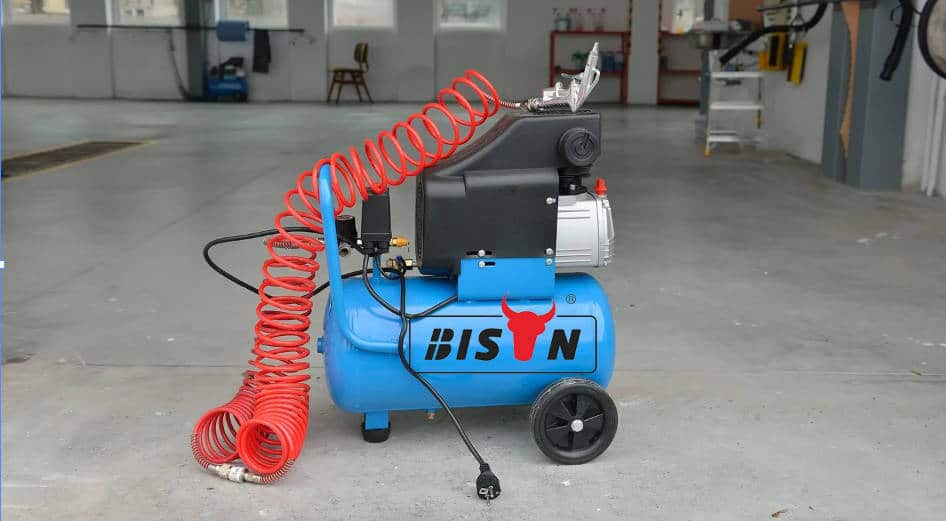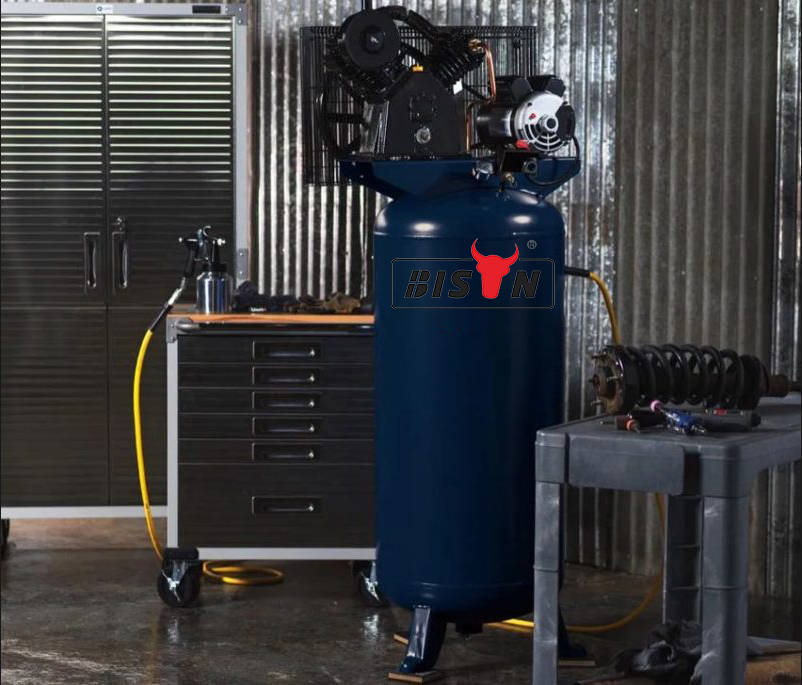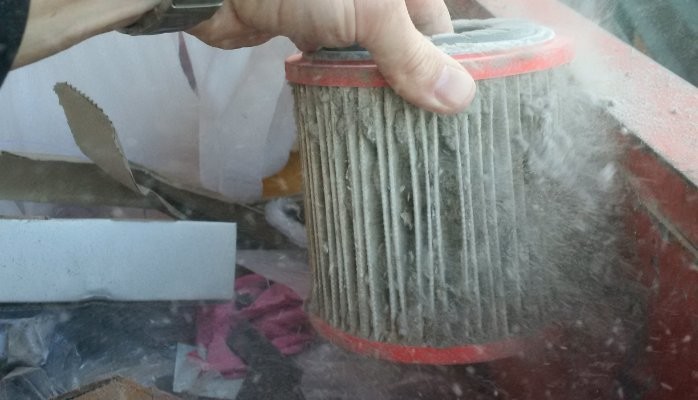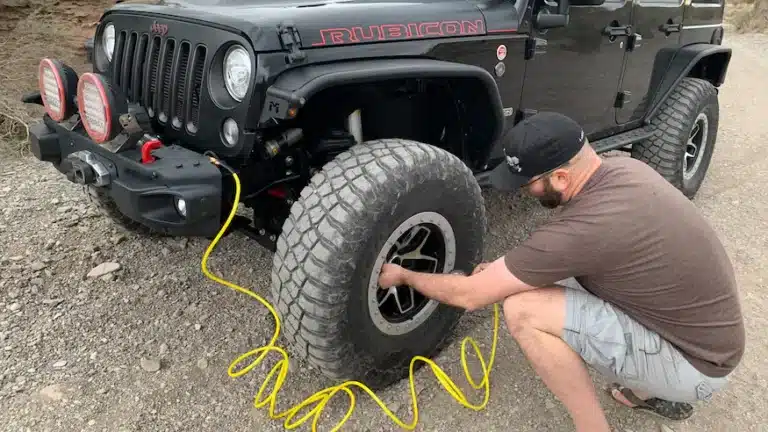air compressor application
Air compressor for home garage
- Aug 11, 2023
Having an air compressor in your garage is convenient and practical, but it’s necessary if you plan to do any small projects around the house. An air compressor is an investment like any other. Like many investments, it can help you save time and money while giving you plenty of opportunities to get work done! But choosing the right size compressor for your home garage is easier said than done.
The best size air compressor for your garage depends on your application. Car work will require a larger, more powerful compressor than the odd small project or inflation need. Compressors in the 10-gallon range are ideal for most home garages for the best overall size.
However, it would help if you took the time to decide on a suitable compressor for your specific needs. But how do you do it? Do not be afraid. We’re here to guide you through it. Let’s start.


CFM is key
The essential factor to consider when looking for an air compressor is CFM. This means cubic feet per minute and measures the flow a compressor can deliver. All air tools have defined CFM requirements, which is why this factor is essential. You need to purchase a compressor that provides enough airflow to the tool to use the device as intended.
Consider PSI
PSI, or pounds per square inch, is another factor to keep in mind when choosing an air compressor. However, you don’t need to be too concerned about this since most air compressors provide enough PSI for most air tools. Focus on CFM first and PSI second.
Air compressor use
CFM and PSI determine the purpose of the air compressor. Therefore, you need to consider the specific purpose of using an air compressor in your garage. This will help you determine the correct size compressor. Let’s look at some examples to give you an idea of what we’re discussing.
Inflating tires, sports equipment, and mattresses
You don’t need a large compressor if you purchase an air compressor to inflate bicycle/car tires, basketballs, or air mattresses. Small sizes in the 1 to the 6-gallon range will do just fine.
DIY projects
Things like upholstering furniture with an air stapler, installing trim with a nail gun, or cleaning tight spaces will require a slightly larger compressor in the 4 to the 8-gallon range.
Auto work
If you plan to use the compressor to operate auto tools such as impact wrenches, you will need a larger, more powerful compressor with a capacity of over 10 gallons.
Sanding and painting
Sanding and painting with a compressor are two things that require high CFM and near-continuous airflow. This means you’ll need a large compressor that turns on and off less often to meet your airflow needs. These compressors are usually in the 20 to the 40-gallon range.
Air compressor size
We often talk about air compressors in terms of size. However, that’s usually not the most important thing. That said, you don’t need a large tank if you only need a compressor to fill the occasional tire and run a nailer now and then. However, you’ll need a larger tank if you’re using tools that require constant airflow, like a sander or paint gun.
If you still need to, the reason is how much air these tools use. Corner nailers use only a little air and only one spurt for every jet. This means you can do a lot of nails on a small can of air.
On the other hand, paint spray guns use a lot of air continuously. While you could imagine operating a paint spray gun with a relatively small air compressor, it will run out of air quickly, so you’ll need to wait for the air tank to refill to get the job done. This cannot be good if you’re painting cars or walls.
So, in that sense, bigger is only sometimes better. It all depends on the air tools you’ll be using, how much air they need, and whether they need near-constant airflow.
Portability
The next consideration for a home garage air compressor is portability. It won’t be portable if you need a particularly large compressor — say 60 to 80 gallons. But since most people don’t need such a large compressor in their home garage, you might opt for a portable compressor.
The portability you want depends on whether you take the compressor out of the garage. Many of the larger compressors on the market have wheels, while others are small enough to be carried around in the trunk of a car or the back of a truck.
It would help if you struck a balance in an often-shipped compressor. You’ll want it to be big enough for what you need yet small enough to carry it around without giving you back pain.
Consider the noise level
If you’ve ever handled an air compressor, you know they’re anything but quiet. However, some sounds are much louder than others. If you primarily use your compressor in your garage, you’ll want a compressor that’s as quiet as possible.
Fortunately, many air compressors are available in “quiet” versions in almost every size. Of course, if you think the noise is an issue, there’s an earbud for you. Although if your compressor is particularly loud, it won’t help the people around or near you much.
Since low noise levels are a big selling point, “quiet” compressors usually say so in the description, so you don’t have to look much for a compressor that emits low decibels.
Air compressor type
There are many types of air compressors to choose from. Even within a compressor of the same size, you can choose from different styles, each with advantages. These types include:
- Pancake
- Twin stack
- Hot dog
- Vertical
If you have limited garage space, you’ll want to carefully consider each type to find one that saves you as much space as possible. Pancake compressors are round and squat and can easily fit under a workbench. The hot dog compressor is thin but long. Twin-stack compressors tend to be bulky and close to a cube. Vertical compressors typically have a small footprint but are taller than others.
Oil or Oil-free Air Compressor
When it comes to air compressors, let’s talk about two types: oil-lubricated or oil-free air compressor.
Most home compressors are made with oil-free pumps, but if you need a larger, more powerful compressor, you may have a choice between oil-lubricated and oil-free.
Oil-free compressors are superb because they don’t require you to worry about changing or adding oil at anytime. In this sense, they are maintenance-free. However, it is presumed that oil-lubricated compressors last longer than oil-free compressors. This is hard to measure and probably not the deciding factor for most people.
If you foresee that your compressor will run a lot – hours a day, five days a week – then you may want to purchase an oil-lubricated model. If not, it is best to use an oil-free air compressor.
As you can see, different types of air compressors are on the market. The best way to choose a machine is to consider what tasks you’ll be using it for, so you purchase the one that suits your needs – but remember how powerful it is.
You need something simple, lightweight, yet powerful to run a tool like a nail gun. In this case, a small, compact air compressor is best.
Choose a sturdier product if you plan to use your air compressor for larger jobs in your home garage or workplace.
Choosing a suitable air compressor is critical to saving time and reducing stress when doing the job at home or the workplace.
We hope this article helps you choose the best air compressor for your home garage.
Air compressor for home garage FAQs
What should I pay attention to when purchasing an air compressor for a home garage?
Choosing the best air compressor for your home garage depends on your needs. Consider how and where you plan to use your air compressor and do some evaluation. One way to purchase a suitable air compressor is to determine which tools have the greatest CFM and PSI requirements, then increase that CFM by 50% to get a good measure. Beyond that, you should also consider your compressor's maintenance requirements and what maintenance you are willing and able to perform.
Also, depending on what you will be using the compressor for, consider its size and weight. If you need to move it around and manipulate it frequently, ensure the size, weight, and portability match your needs. Next, if you work in an environment where small children or pets might be startled by loud noises, choose an air compressor with a lower noise output. Finally, select an air compressor with dual universal couplers if you wish to use multiple tools simultaneously.
What are the benefits of using an air compressor in a home garage?
An air compressor in your garage lets you power all your air tools, such as staplers, nail guns, and paint sprayers. Doing so can significantly increase your productivity and reduce the time needed to finish work. An air compressor is a versatile tool because it can perform various tasks. Whether you're an artist, hobbyist, do-it-yourselfer, professional builder, or automotive wizard, there's a good chance you have a tool that could benefit from the help of an air compressor.
Additionally, the air compressor can quickly inflate pool floats, tires, balloons, basketballs, and other recreational equipment. Plus, since most air compressors are portable, they're great for home garages. They're often compact and highly mobile, so you can quickly move them from project to project, work to work, and storage to storage. Finally, air compressors made for home garages are low maintenance and economical. They'll save you the time and money of outsourcing simple jobs to professionals. Home air compressors are inexpensive; you can do simple jobs yourself, so purchasing one is brilliant.
What size air compressor do I need for my home garage?
The ideal size air compressor will vary depending on how you plan to use it. For example, the range of tanks from 15 to 30 gallons is perfect for those planning to undertake large projects around the home. If you plan to install cabinets, trim work, complete a large painting project, etc., you will need an air compressor with a large tank size to keep your project running smoothly.
If you like using an air compressor for small, short-term projects, an air compressor with a smaller tank size will be suitable. For example, if you're only going to use it occasionally to inflate or clean things, a smaller tank size in the 4 to 10-gallon range is acceptable. Choosing an air compressor size depends on how you will use it, especially the type and number of tools you want to use it with at one time.
What CFM rating is best for a home garage air compressor?
The CFM or cubic feet per minute rating is the rate at which air is expelled from an air compressor. It is based on the pressure level or PSI of the compressed air and the output valve from which you are getting the output. The recommended CFM rating can range from 1 to 5 CFM for a primary home air compressor. If the CFM rating exceeds 5 CFM, the compressor is in the commercial category.
How to extend the life of your home garage air compressor?
You can extend the life of your air compressor and keep it running smoothly for years to come. One of the most important things is to keep the compressor clean. Do this by checking the air filter regularly and replacing it if necessary. Also, it is essential to periodically lubricate the compressor's moving parts to prevent wear and tear.
Monitor pressure gauges and temperatures to make sure the compressor is well-rested. Check oil levels and air quality, tighten loose bolts, and fix repair issues quickly.
If you have any enquiries about the BISON air compressor, we would love to hear from you.








